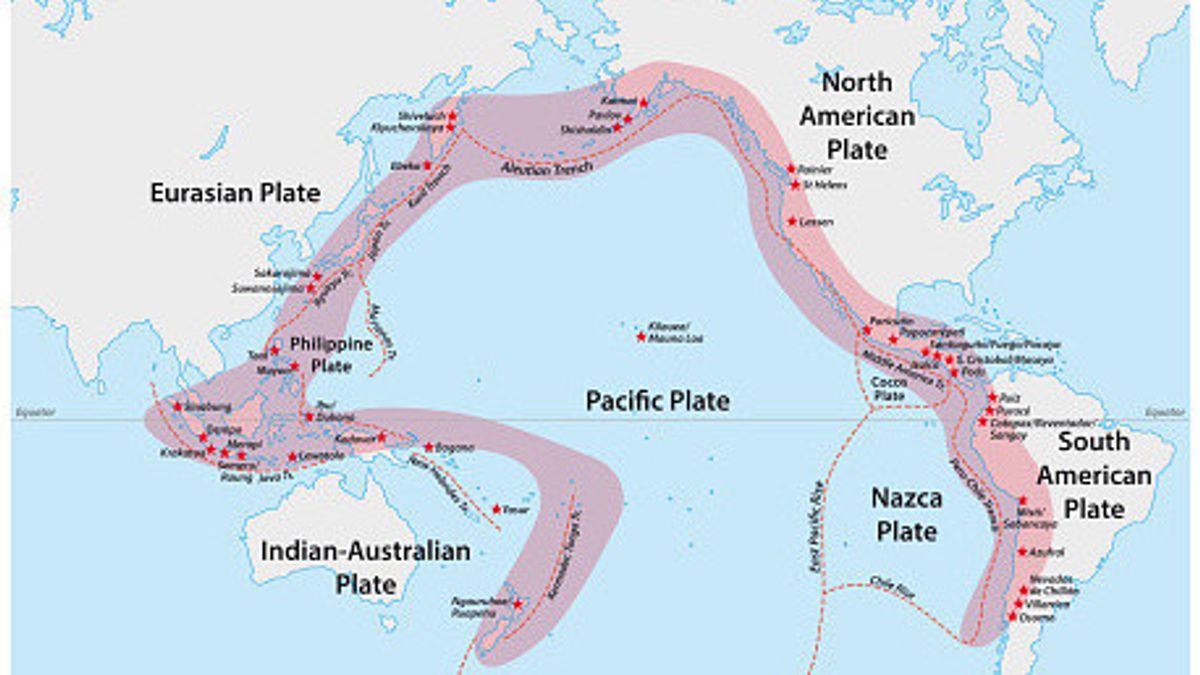JAKARTA - Less than two weeks after the tragic earthquake that killed more than 40,000 people in Turkey and Syria, another earthquake rocked New Zealand.
Guncangan yang terjadi pada hari Rabu dengan magnitudo sekitar 6, mengguncang kedua pulau Selandia Baru, meskipun belum ada laporan kerusakan atau korban luka sejauh ini.
Gempa bumi terjadi sepanjang waktu, dari yang terlalu kecil untuk diwujudkan hingga gempa bumi magnitudo tinggi yang mengakibatkan ribuan kematian. Namun, terjadinya gempa bumi ini begitu cepat setelah bencana di Turki dan Syria mengumbahkan pertanyaan - apakah keduanya terkait?
Here, MailOnline is researching closer to today's events and whether it was linked to a devastating earthquake in the Middle East last week.
The epicenter of Wednesday's earthquake was in the Cook Strait - the waters separating North and South New Zealand islands.
The earthquake occurred on Wednesday, February 15, at a depth of about 50 miles (74 km), according to the United States Geological Survey, at 7.38 pm local time (6:38 am GMT).
According to Reuters, a witness felt a strong vibration that lasted several seconds in the capital Wellington.
GeoNet, an agency that monitors geological dangers, said it received more than 61.000 reports from people who felt the shock.
Fortunately, GeoNet said 'no tsunami can happen even if the epicenter is off the coast.
This comes after Cyclone Gabrielle caused significant damage in the North Island this week, killing four people, more than 10,000 displaced and extensive damage.
What is the Cause of the Earthquake?
The earthquake occurred when two tectonic plates shifted in opposite directions against each other and then slid suddenly.
New Zealand is on the boundary between two tectonic plates, the Australian Plate and the Pacific Plate, although Australia's great neighbors are further from this limit and have milder shocks.
"The earth's crisis consists of mutually moving tectonic plates," said Dr. Jessica Johnson, a geophysicist at the University of East Anglia, told MailOnline. "On the boundaries of these plates, shifting rocks can accumulate mutual pressure due to friction and suddenly sliding, causing an earthquake."
Heavy earthquakes usually occur along fault lines where tectonic plates meet.
A study stated that there was no link between the earthquake in New Zealand and Turkey-Syria and that the two were "unrelated".
This is partly because both regions are too far - about 10,000 miles - which is far outside the aftershock category.
"In active tectonic areas, small earthquakes occur very often, and are often not felt," Dr. Johnson told MailOnline. "However, when an earthquake is bigger and closer to the surface, shocks can be felt and cause damage."
"When an earthquake occurs, pressure can be transferred to other faults around it and makes that fault more or less likely to fail," he said. "However, faults in New Zealand and Turkey are too far away from affecting each other."
Likewise, according to David Rothery, Professor of Geosciences Planet at Open University. "It is impossible for an earthquake in New Zealand to occur as a result of an earthquake in Turkey," said Rothery.
According to British geologist Roger Musson, earthquakes are "far more than most people are aware of" and therefore those with smaller impacts are "passed by those who are not seismologists".
"I'm not saying there are too many right now, except for all the aftershocks in Turkey," Musson said.
According to the National Earthquake Information Center (US), there are about 20,000 earthquakes worldwide each year, or about 55 per day, although there are only about 16 major earthquakes each year.
Is California Next?
In the US, California has more earthquakes that cause damage than any other state, despite earthquakes in the states of thetensic and East as well.
California is just one of many global locations along the "LIGHT Ring" - a long belt that is seismically active along the edge of the Pacific Ocean.
Between 80 and 90 percent of earthquakes in the world occur along the Ring of Fire, despite its name being a half-circle. California is prone to earthquakes because it lies in the San Andreas Patent, where two tectonic plates meet.
San Andreas' break stretches about 750 miles through the western state of the United States, with the Pacific Plate on the one hand and the Pacific Plate on the other.
Local people often talk about "The Big One" - a hypothetical 7.8 or higher magnitude earthquake that will soon hit California.
Locals often talk about 'The Big One' - a hypothetical earthquake with a magnitude of 7.8 or higher that will occur in California in the near future. However, the rise or temporary decline in global seismic events is part of normal fluctuations of the earthquake level. In other sense, two high-power earthquakes recently gave no hint of where the next earthquake would occur.
"There is always a possibility that another big earthquake will occur elsewhere (for example in the US), but no more or less may occur because of this earthquake," Dr. Johnson told MailOnline.
While it is known that most global earthquakes will concentrate on the boundaries of the plates, no reliable method of accurately predicting time, location, and magnitude. The use of artificial intelligence (AI) techniques such as machine learning is also not helpful much as the technology seeks patterns to draw conclusions.
"Large earthquakes don't happen like watches," said James S. Neely at Northwestern University's Department of Earth Sciences and Planetari. "Sometimes we see some large earthquakes occur in a relatively short time span and then a long period of time when nothing happens. Traditional models cannot overcome this behavior."
However, this does not stop people from looking for patterns in earthquake data to form conclusions.
A Dutch researcher named Frank Hoogerbeets works at the Solar System Geometry Survey (SSGS), an organization that studies 'geometry between celestial objects associated with seismic activity'.
In a tweet written on February 3, he said that 'earlier or later' there would be a 7.5 magnitude earthquake in southern central Turkey, Jordan, Syria or Lebanon. The tweet went viral after the incident - but the vague 'prediction' was not based on valid science.
SSGS often make predictions about where an earthquake would occur, but most are inaccurate and completely useless. Any relationship between a celestial body and seismisity "has been denied many times," according to Musson.
"Large earthquakes will occur in California 'earlier or later'. So what? Predictions have to determine the time or that's not a prediction," he told MailOnline.
Professor Rothery added: "Reporting that there will be 'earlier or slower' earthquakes in large faults that are known to be predictions that we can all make, and have no useful value at all."
The English, Chinese, Japanese, Arabic, and French versions are automatically generated by the AI. So there may still be inaccuracies in translating, please always see Indonesian as our main language. (system supported by DigitalSiber.id)













